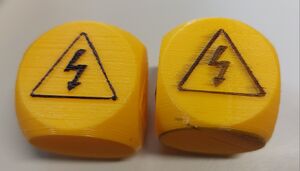3D Print Postprocessing
There are several postprocessing steps you can perform on your 3D prints.
Surface Finishing
Sanding
PLA tends to leave a white smear, if you do it for the looks, you should probably plan to paint it afterwards. Other materials like "ngen" can be sanded without color change.
Epoxy Coating
You could use common epoxy or specialized products like XTC-3D to add a smooth transparent layer on top of your part. This can be combined with sanding. It is even possible to add color or metal powder to change the appearance of your part. We would recommend to add the first layer without coloring as it will especially fill the grooves between each printed layer and would concentrate the particles there. For the second layer you can add coloring already.
Painting
Acrylic paints stick nicely to PLA. Paint might chip off later, to improve adhesion try using a primer first.

If you want to draw fine lines on a 3D print, you will almost certainly run into issues because the print layers possess a wicking property and "suck" the paint into unintended places just like on other fibrous materials. To prevent this effect, seal the surface before painting - even wood glue will do the trick!
Vapor Smoothing
ABS can be smoothed in acetone vapor, removing visible layer lines. The part will also lose some fine details. This technique does not work with PLA, the chemical to solve PLA (MEK) is really nasty and dangerous for your health and the environment.
Glueing
For PLA, we've had success using super glue (PLA to $otherMaterial) and hot glue (PLA to PLA). Friction welding using a piece of matching filament chucked into a rotary tool potentially gives the nicest result as you add material of the same properties!
Tempering
The proper heat treatments can anneal ("organize") the microscopic structure of certain materials and make them stronger (see Tom Sanlanderer's review of tempering PLA). You could use the drying oven for this - please let us know how it turns out!
Threaded Fasteners
There is a nice writeup on 3dhubs.